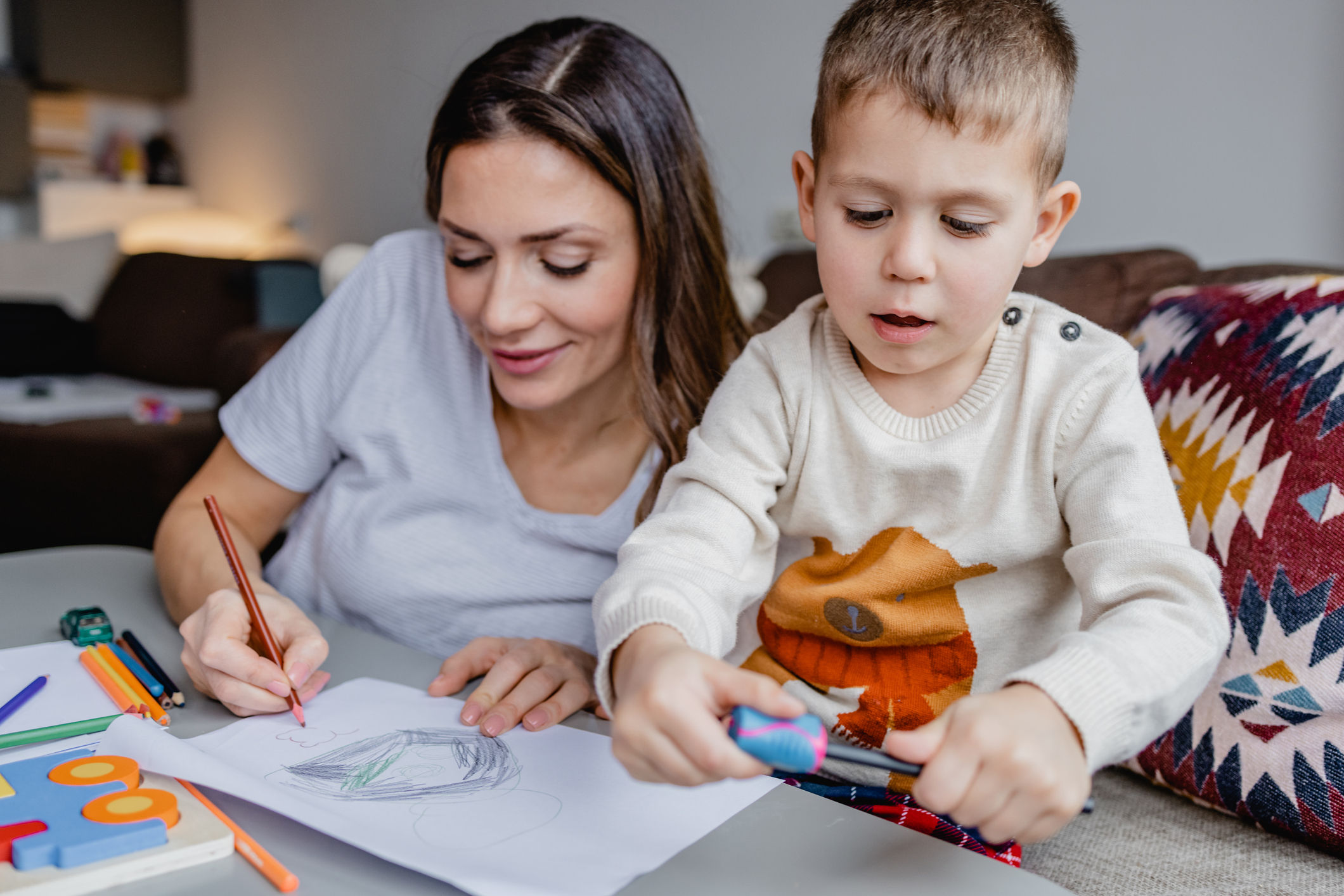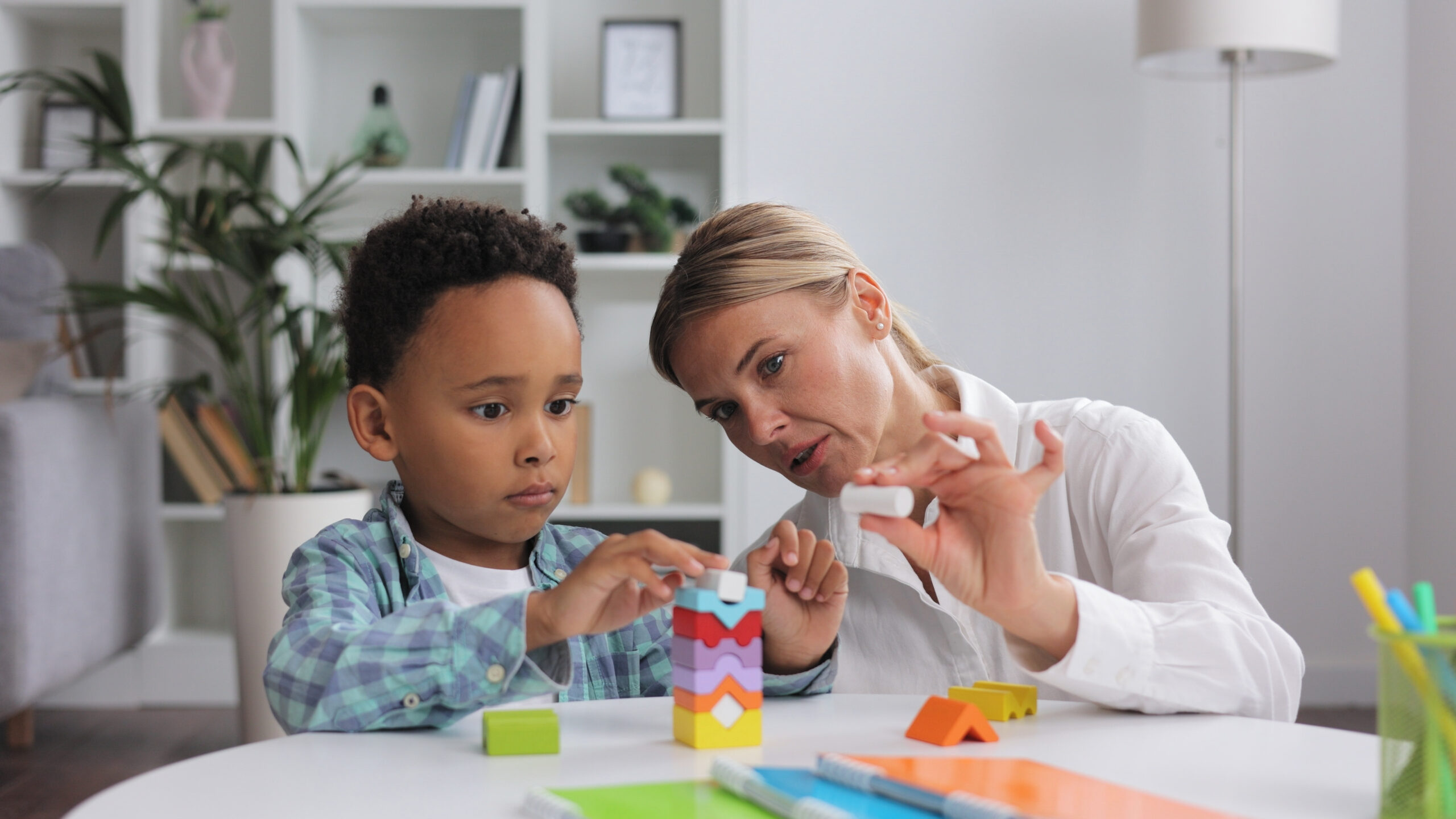7 Powerful Ways to Help a Child with Autism Thrive

Autism affects each child differently, but one thing remains constant: every child on the spectrum deserves the chance to thrive. April is Autism Awareness Month, a time to celebrate neurodiversity. At KVC Missouri, we understand the importance of supporting these remarkable children and their families. Let’s explore seven powerful ways to help a child with autism thrive, fostering their confidence, independence and a joyful life.
1. Get Personal
Every child with autism is unique, so understanding their specific needs, strengths and challenges requires patience and focused attention. “If you’ve met one child with autism, you’ve met one child with autism,” says Meghan Becker, Respite House Supervisor with KVC Missouri.
Notice their nonverbal cues, including how they express emotions and their preferred communication style. Daily routines offer opportunities to identify strengths and areas of difficulty, such as struggles with learning through observation. Repetition and patience are essential in guiding them through tasks, like morning routines, where learning cues might be missed.
Tailoring interactions based on the child’s interests can effectively support their development. For example, does your child love dinosaurs? Transform mundane bath time into a prehistoric adventure, letting them name the dinosaur toys and creating stories about their “habitat.” Not only does this playful twist make hygiene engaging, but it also creates opportunities to sneak in important lessons, like counting or color-sorting the dinosaurs.
Remember, children with autism often learn best through hands-on experiences tailored to their passions. By turning their world into a personalized learning adventure, you’ll build a strong connection and empower them to thrive.
2. Embrace Their Individuality
Every child with autism has unique interests and passions — that’s their superpower for learning! So ditch the one-size-fits-all approach and celebrate their unique ways of engaging with the world. Be their partner in discovery!
By meeting them where they are, with games and activities that spark their excitement, you both support their individuality and cultivate a lifelong love of learning. Maybe they’re fascinated by trains? Create a morning routine chart with train-themed pictures for each step. It might take some creativity (think: building a fort out of blankets to practice fine motor skills), but utilizing their interests creates a space for learning that feels safe and joyful, building a strong foundation for future growth and success.
3. Focus on Communication
For both verbal and nonverbal children, clarity is key. Forget the complex sentences and metaphors. Instead, be direct and use plain language. Remember, they might take things literally, so ensure your words accurately reflect your message.
For nonverbal children, explore various communication methods. Consider using picture exchange communication (PECS) with actual photos from your home. This personalizes communication and helps them request specific things, like their favorite muffin for a snack! Patience is paramount. Learning a new way to communicate takes time, so celebrate every milestone, big or small.

Another way to actively build your child’s communication skills is to model what you want them to learn. Talk through daily tasks, explaining each step simply. Let them see you using communication effectively, and encourage them to participate as they’re comfortable.
“Short and sweet is best!” Becker advises. “When giving instructions, especially at first, use simple words like ‘put on shoes.’ Long sentences may lead to confusion. Once they understand, you can add more words later. For example, instead of ‘Let’s go for a walk,’ say ‘Put on shoes, socks and a jacket. Now we can go!'” This combination of clear communication and active modeling will empower your child to blossom as a communicator.
4. Help Them Develop Social Skills
You can turn everyday moments into social skill-building opportunities. If your child has siblings, encourage them to interact by practicing taking turns and sharing, like asking for the remote instead of grabbing it. At the park, use playtime as a social lesson. If the slide is busy, explain why it’s important to wait your turn and suggest saying “hi” to the child in front of them.
At home, board game nights are a fun way to practice turn-taking, waiting patiently and even sportsmanship. Encourage them to celebrate wins and be gracious when they lose. By praising good choices (“Good job!” for waiting your turn) and offering gentle guidance, you’ll help your child thrive socially.
“I highly recommend exploring social skills groups,” shares Meghan. “These programs are fantastic because they’re specifically designed to teach children with autism social interaction skills. It’s like learning a whole new language. For example, imagine being at school and wanting a classmate’s crayon. A social skills group can teach kids to ask politely, ‘Hey, are you done with that crayon? Can I use it when you’re finished?’ instead of just grabbing it.”
5. Be a Voice for Their Education
Effective advocacy transforms your child into an active participant in their education. Individualized Education Program (IEP) meetings are opportunities to become an informed advocate. Arrive prepared to champion your child’s needs, outlining specific areas for growth. Remember, collaboration is key to unlocking their potential. Acknowledge the educators’ dedication and celebrate your child’s progress together.

Schools offer a wealth of support services, including speech and occupational therapy. Advocate for these interventions if they align with your child’s specific needs. “Speak up on your child’s behalf,” Meghan advises. “Share your concerns openly and don’t be afraid to voice your opinion. If something bothers you, address it directly. Say ‘Hey, I’ve noticed this [issue]. Let’s talk about it. I’m concerned and want a solution.’ Be persistent, but professional. Clear and kind communication is key, and everyone benefits from it.”
Always remember, you and the educators share a mission: nurturing your child’s unique potential and empowering them to thrive. And to achieve that, collaboration and communication are crucial.
6. Explore ABA Services
Applied Behavior Analysis, or ABA, isn’t just a therapy; it’s a personalized roadmap to success. This evidence-based approach utilizes a range of targeted strategies to unlock your child’s full potential.
Think of it as a secret weapon for helping your child build social skills, master self-care routines, communicate like a champ, have a blast with playtime and even manage their own awesome personalities! ABA can be a game-changer, so it’s definitely worth exploring!
7. Prioritize Self-Care
Self-care is not a luxury. It’s a necessity. Feeling overwhelmed is perfectly normal, so don’t be afraid to seek support and take breaks. By prioritizing your well-being, and asking for help when you need it, you become a stronger, more effective advocate for your child.
KVC Missouri offers a free Autism Respite Program, featuring Community-Based and In-Home Respite Programs to provide youth with opportunities to develop independent living skills. By utilizing this service, you’re also prioritizing your self-care. Think of it as filling your own cup first. A full cup overflows with the love, patience and unwavering support your child needs to thrive.
Building a Brighter Future: Empowering Your Child with Autism
Autism is a spectrum, and every child’s journey is unique. But one thing is universal: all children with autism deserve the chance to thrive. With patience, creativity and a deep love for your child, you can ensure their future is bright and filled with possibilities.
Want to learn more about how KVC Missouri provides support for children living and learning with an autism spectrum disorder? Discover our autism services today.





